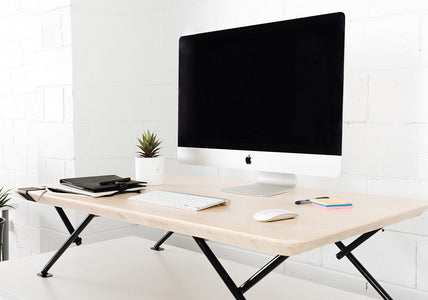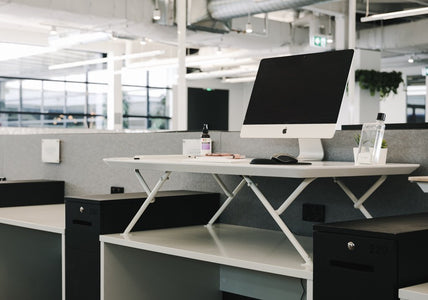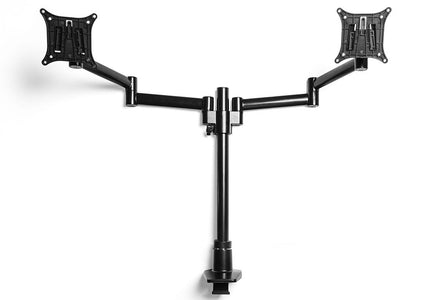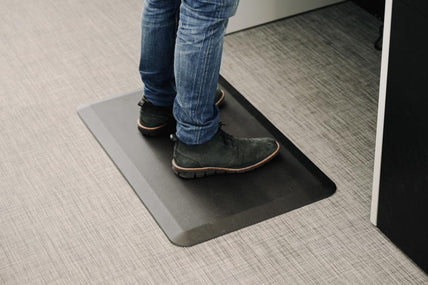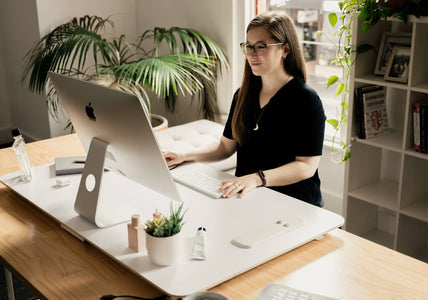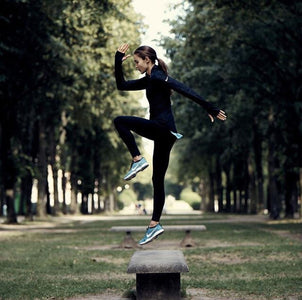Are Standing Desks Good For Your Health?
By Daniel Angelini on February 14, 2019What do Ernest Hemmingway, Leonardo DaVinci and Virginia Woolf all have in common?
All 3 figures are said to have worked standing upright-
Roughly 45% of Australian workers spend most of their day (6-8 hours) sitting at a desk.
For most workers, a majority of each day is spent sitting on a chair in front of a computer. Clearly, this does not sound like the best way to treat your body in the long run.
A health-conscious attitude to your work life is only going to be more beneficial to you. Merely taking the stairs instead of the elevator in the morning can count toward the minimum 30 minutes of physical activity you need every day.
There are many ways in which a standing desk can aid, heal or even better existing physical conditions.
So, how can a standing desk help you?
Good question! We've compiled a veritable laundry-list of conditions, ailments and physical problems that can be improved by standing just that little bit more whilst at work.
How can a standing desk help to ease neck and back pain?
Nothing makes a long working day more painful than suffering from a persistent neck or back pain, and in some cases, the causes of such ailments can be the same! Poor posture and prolonged sitting can often cause dull or sharp pains in your back and neck. One sure-fire way to get rid of your bad postural habits is to get moving!
Changing from a sedentary or seated position at work has been shown to be beneficial for your back. Increased movement is conducive to greater physical health- and can lessen the pain you may be feeling.
Though it is not a cure-all solution, an improvement on sitting 6-8 hours a day has in some studies, shown a near 50% decrease in the existence of back pain for those suffering.
So if you suffer from a form of back or neck pain, get standing!
Can standing desks help you lose weight?
Sitting down has been linked to many different diseases including diabetes, hypertension, some forms of cancer, anxiety and a more general probability of early risk of death (correlation with little to no causation, however).
Standing increases your heart rate, your blood flow, as well as burning more calories compared with sitting. Although recent studies have shown that the difference may be relatively small in calories burned per hour of standing (Caloric differential when measured over a 6 hour standing period), the health benefits that come with it mean that you are living a healthier lifestyle overall, which can’t hurt!
Carpal Tunnel
The dreaded carpal tunnel syndrome is the result of your median nerve squeezed right at the wrist. When the carpal tunnel is obstructed or interfered with, it can cause a dulling, numbness or even a sharp piercing pain in your arms.
Sitting for extended periods is one of the leading causes of carpal tunnel syndrome, as bad posture effects blood flow. A standing desk not only alleviates the pain, but it can also decrease the risk of you contracting the syndrome, whilst eliminating the need for expensive medicines.
Varicose Veins and Deep Vein Thrombosis
Sitting for long periods of time can lead to what is known as Varicose (or Spider) veins- this is caused by inactivity, predominately sitting, leads to blood pooling in your feet and legs.
Varicose veins aren’t particularly dangerous but in many cases, they can cause great discomfort, and in some rare cases can lead to blood clots, which can cause serious health problems.
Another potentially harmful effect of sitting for too long is Deep Vein Thrombosis (DVT). Long periods of sitting can increase the chances of a blood clot, and if this clot in the vein breaks off and moves elsewhere in the circulatory system, it can cut off blood flow to other, vitally important parts of the body, leading to an embolism. This is a serious medical issue and can have a wide range of major health complications.
A standing desk can prevent the instance of blood pooling by increasing your activity and decreasing the amount of time spent sitting in a chair at work!
How can more time standing aid your pregnancy health?
Sitting for hours when pregnant can cause a variety of uncomfortable consequences, from stiffness to prolonged periods engaging in poor posture. Several studies also show that (according to deskadvisor.org), sitting for long periods of time can also lead to weight gain and gestational diabetes.
During your second trimester, many studies show that prolonged periods of sitting may also cause more activity and movement in the womb, leading to discomfort.
Along with the above, you may experience more energy, less joint pain, and your child will also be less aggressively active in the womb!
Sciatica and standing desks
Sitting for extended periods of time can become incredibly painful for those suffering from sciatica. For those with the awkward condition, it is recommended that you get up from a seated position at least every 20minutes to give your nerves a rest.
Standing desks can be a great help by adding another option to move to when walking around your office is not an option.
How can a standing desk improve your core strength?
Did you know that your muscles are 20% more active when standing up? Increase in blood flow will also help you to build your core strength while standing at a desk. More movement also promotes healthier core strength and reduce muscle stiffness.
How does a standing desk affect your blood pressure?
A study by the University of Minnesota, USA, found that even moderate increases in standing time each day lead to improved blood pressure, as well move to reduce the risk of Cardiometabolic risk.
The study conducted in 2014 found that decreases in sedentary time during your day also had beneficial effects on blood sugar and triglycerides too-
…Still sitting?!
What is the best practice for standing desk use?
Getting a standing desk is by no means a cure for all your ailments or physical problems, but it a big step towards a healthier and more balanced and active working lifestyle…
But in order to get the best out of your standing desk, here are some MOVI approved steps to take to ensure that you’re using your desk correctly…
Guidelines for best practice ergonomic setup for your new standing desk:
- Position your monitor one arm's length away from you (50-71 cm)
- Top of your monitor is at or slightly below eye level
- Tilt your monitor slightly upwards (10-20 degrees) to stop reflections
- Stand directly in front of your monitor
- Relax your shoulders
- Keep upright and avoid slouching
- Keep your elbows beside you at a 90-degree angle
- Wrists and hands are parallel to the floor and have the freedom to move
- Wrists and hands can rest comfortably on your desk
- You have even weight spread across both feet
- There is no pressure on your back when adjusting up and down
- You have a wide-open work area with no limitations
- Use an anti-fatigue mat if you stand on a hard surface
So there you have it!
Some of the best tips you’re going to get to beat some of the most common ailments and conditions caused by a sedentary lifestyle. For more information visit our health page or take a look at Author and Inventor Daniel Angelini’s book titled; ‘The Sitting Epidemic’, which you can purchase here.

